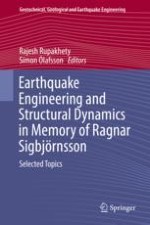This book presents methods and results that cover and extend beyond the state-of-the-art in structural dynamics and earthquake engineering. Most of the chapters are based on the keynote lectures at the International Conference in Earthquake Engineering and Structural Dynamics (ICESD), held in Reykjavik, Iceland, on June 12-14, 2017. The conference is being organised in memory of late Professor Ragnar Sigbjörnsson, who was an influential teacher and one of the leading researchers in the fields of structural mechanics, random fields, engineering seismology and earthquake engineering. Professor Sigbjörnsson had a close research collaboration with the Norwegian Institute of Science and Technology (NTNU), where his research was mainly focused in dynamics of marine and offshore structures. His research in Iceland was mainly focused on engineering seismology and earthquake engineering. The keynote-lecture based chapters are contributed by leading experts in these fields of research and showcase not only the historical perspective but also the most recent developments as well as a glimpse into the future. These chapters showcase a synergy of the fields of structural dynamics, engineering seismology, and earthquake engineering. In addition, some chapters in the book are based on works carried out under the leadership and initiative of Professor Sigbjörnsson and showcase his contribution to the understanding of seismic hazard and risk in Iceland. As such, the book is useful for both researchers and practicing engineers who are interested in recent research advances in structural dynamics and earthquake engineering, and in particular to those interested in seismic hazard and risk in Iceland.
